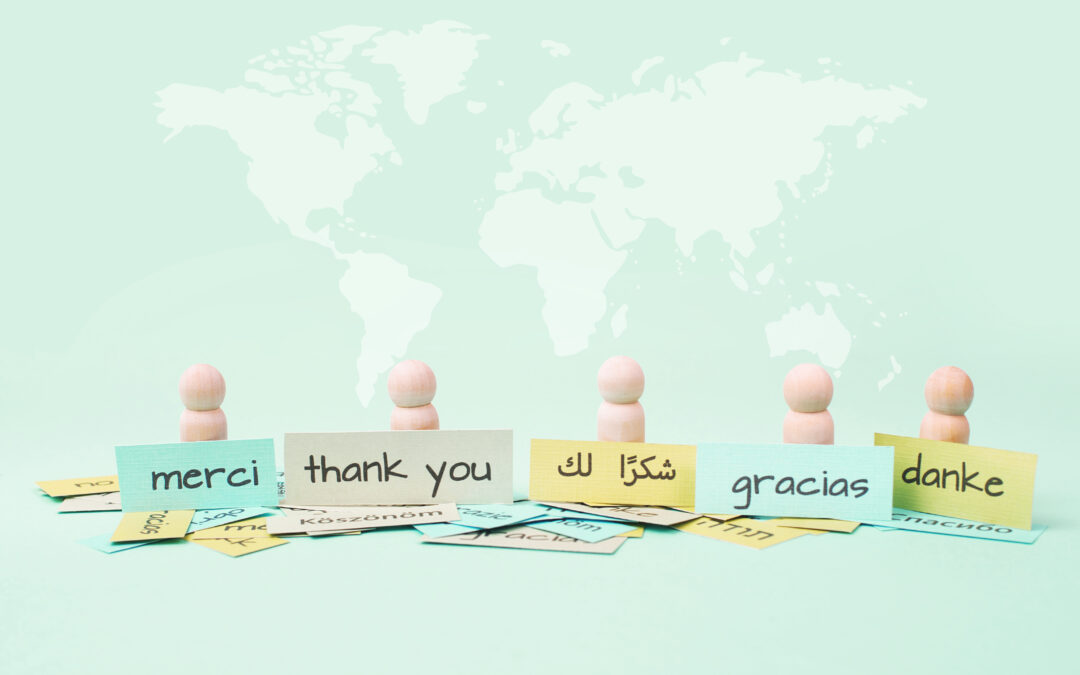In the international communities of Marbella and Madrid, families increasingly recognize that early language exposure represents one of the most valuable gifts they can provide their children. While language learning apps, tutors, and bilingual schools all play roles in language development, none can replicate the natural, immersive experience that bilingual nannies provide through daily caregiving interactions. Understanding why multilingual childcare matters and how it differs fundamentally from formal language instruction helps families make informed decisions about their children’s early language environments.
At The Governess & Co, we specialize in matching families with nannies who bring authentic multilingual capabilities alongside exceptional childcare skills. Our experience facilitating these placements has revealed the profound impact that bilingual caregivers create—benefits that extend far beyond simple language acquisition into cognitive development, cultural understanding, and lifelong advantages that shape children’s entire educational and professional trajectories.
Understanding Natural Language Acquisition
Children’s brains are uniquely designed for language learning during early childhood, possessing capabilities that diminish significantly after early elementary years. This “critical period” for language acquisition creates a narrow window where children can absorb multiple languages with native-like pronunciation, intuitive grammar understanding, and the kind of effortless fluency that adult language learners struggle to achieve regardless of dedication or study intensity.
The Immersion Advantage
Bilingual nannies provide something that no classroom or structured lesson can replicate: natural language immersion within meaningful, emotionally connected contexts. When a nanny speaks Spanish while preparing meals, discussing the day’s activities, or comforting an upset child, language becomes inseparable from daily life rather than an academic subject to be studied.
This integration creates the conditions under which children’s brains treat the second (or third) language as equally natural and necessary as their first language. The nanny’s language isn’t “foreign”—it’s simply how that particular person communicates, making it as essential to learn as understanding any other important person in their world.
Contextual Learning
Children learning languages through bilingual nannies acquire vocabulary and grammar structures within authentic contexts that provide natural meaning. When a nanny says “Vamos a lavarnos las manos antes de comer” while guiding children to wash hands before meals, the language connects directly to actions, routines, and purposes rather than existing as abstract words to be memorized.
This contextual embedding creates robust neural connections between language, meaning, and experience. Children don’t need to consciously translate or recall vocabulary—the language activates automatically when they encounter similar situations, creating the kind of intuitive fluency that characterizes native speakers.
Cultural Transmission Beyond Language
Perhaps the most underappreciated benefit of bilingual nannies involves the cultural understanding they transmit alongside language skills. Languages aren’t simply different words for the same concepts—they represent distinct ways of organizing thought, expressing emotion, and understanding social relationships.
Cultural Perspectives and Values
A Spanish-speaking nanny from Spain brings different cultural perspectives than one from Latin America, despite sharing language. These cultural nuances—how people greet each other, express affection, handle conflict, or celebrate achievements—become part of children’s understanding of the world through daily observation and participation.
Children with bilingual nannies develop what researchers call “cultural intelligence”—the ability to navigate different cultural contexts, understand varying social norms, and appreciate that multiple valid approaches exist for virtually any human activity. This flexibility of thinking creates advantages that extend far beyond language skills into general social and cognitive capabilities.
Traditions and Celebrations
Bilingual nannies often share cultural traditions, songs, stories, and celebrations from their backgrounds, enriching children’s understanding of global diversity. A French nanny might teach traditional French nursery rhymes, prepare authentic French children’s meals, or explain French holiday traditions. These cultural transmissions create personal connections to other cultures that go deeper than tourist-level exposure.
Children who experience authentic cultural transmission through beloved caregivers develop genuine appreciation and respect for cultural diversity rather than viewing other cultures as exotic curiosities. The nanny’s culture becomes personally meaningful rather than academically interesting.
Cognitive Benefits of Bilingualism
Research consistently demonstrates that bilingual children develop enhanced cognitive capabilities that extend well beyond language skills. These benefits emerge from the constant mental exercise that managing multiple languages provides.
Executive Function Development
Bilingual children’s brains must constantly manage which language to use in different contexts, suppress one language while using another, and switch between linguistic systems based on social situations. This ongoing mental juggling strengthens executive function—the brain’s ability to plan, focus attention, manage multiple tasks, and inhibit inappropriate responses.
These enhanced executive function skills manifest in better performance across numerous areas: improved focus during academic tasks, better ability to ignore distractions, enhanced problem-solving capabilities, and superior planning and organizational skills. The cognitive workout that bilingualism provides strengthens general mental capabilities rather than just language-specific abilities.
Enhanced Metalinguistic Awareness
Children learning multiple languages develop stronger awareness of language as a system—understanding that words are symbols representing meanings rather than inherent properties of objects. This metalinguistic awareness supports literacy development, makes learning additional languages easier, and enhances communication skills generally.
Bilingual children often become more effective communicators even in their primary language because they’ve developed sophisticated understanding of how language works, how meanings can be expressed in multiple ways, and how to adjust communication based on listeners’ needs.
The Critical Role of Consistency and Quality
While bilingual nannies offer tremendous potential benefits, the actual outcomes depend significantly on the consistency and quality of language exposure children receive. Not all bilingual childcare arrangements produce equal results.
Native or Near-Native Fluency
The most effective bilingual nannies possess native or near-native fluency in both languages, providing children with accurate pronunciation models and intuitive grammar usage. Nannies who learned languages as adults may speak functionally but lack the subtle pronunciation and grammar intuitions that children absorb from native speakers.
At The Governess & Co, we carefully assess nannies’ language capabilities to ensure families receive genuine native-quality exposure rather than simply functional communication. This distinction significantly impacts children’s ultimate language development trajectories.
Maintenance of Language Boundaries
Successful bilingual environments require consistent language boundaries—nannies maintaining their designated language even when children respond in different languages or request switches. This consistency, while sometimes challenging, creates the immersive conditions necessary for deep language acquisition.
Experienced bilingual nannies understand how to maintain language boundaries gently but firmly, responding to children’s attempts to switch languages with patient redirection rather than rigid insistence. This balance encourages children’s language development without creating power struggles or negative associations with the target language.
Sufficient Exposure Hours
Language acquisition requires substantial exposure—researchers suggest minimum thresholds of approximately 30% of waking hours for meaningful bilingual development. Families employing full-time bilingual nannies typically provide sufficient exposure, while part-time arrangements may need supplementation through other sources to reach effective thresholds.
Professional agencies help families understand these exposure requirements and design staffing arrangements that provide adequate language input for their bilingual goals.
Addressing Common Challenges
While bilingual nannies offer significant benefits, families occasionally encounter challenges that require understanding and strategic approaches.
Language Mixing and Code-Switching
Children learning multiple languages often mix languages within single sentences—a phenomenon called code-switching. Many parents worry this indicates confusion or delayed language development, but research shows it actually demonstrates sophisticated metalinguistic awareness. Children code-switch strategically, often choosing words from whichever language expresses their meaning most precisely.
Experienced bilingual nannies understand that code-switching represents normal bilingual development rather than problematic confusion. They gently encourage language separation while recognizing that mixed-language periods typically resolve naturally as children’s language skills develop.
Temporary Language Delays
Some bilingual children demonstrate slight delays in vocabulary development compared to monolingual peers during early years. However, these delays are temporary and misleading—bilingual children’s total vocabulary across both languages typically exceeds monolingual children’s single-language vocabulary.
Professional nannies help parents understand these developmental patterns, providing reassurance that temporary delays don’t indicate problems and explaining why bilingual children’s language trajectories differ from monolingual norms.
Resistance and Preference
Children sometimes resist speaking their weaker language, particularly if one language dominates their environment through school or community contexts. Bilingual nannies employ various strategies to maintain children’s motivation: making the target language fun through songs and games, connecting the language to beloved activities or treats, and maintaining warm, positive associations with the language rather than making it feel like obligatory work.
Strategic Implementation for Maximum Benefit
Families seeking to maximize bilingual benefits through nanny arrangements benefit from strategic approaches that optimize language exposure and development.
Complementary Language Selection
The most effective bilingual nanny arrangements complement rather than duplicate children’s other language exposures. If children attend English-medium schools, a Spanish-speaking nanny provides balanced exposure rather than reinforcing their already dominant language.
Professional agencies help families analyze their children’s complete language environments and select nanny languages that create optimal balance rather than simply matching parents’ language preferences.
Integration with Family Language Goals
Successful bilingual arrangements align with broader family language goals and values. Families should clarify whether they’re seeking functional bilingualism for practical communication, cultural connection to heritage languages, or academic-level literacy in multiple languages. These different goals require different approaches and expectations.
Our consultants help families articulate their language goals clearly, then match them with nannies whose approaches and capabilities align with those specific objectives.
Long-Term Impact on Children’s Lives
The benefits of bilingual nanny care extend far beyond childhood into adolescent and adult advantages that shape educational opportunities, career possibilities, and life experiences.
Academic Advantages
Bilingual children consistently demonstrate enhanced academic performance across multiple subjects, not just language arts. Their strengthened executive function, enhanced problem-solving capabilities, and superior focus contribute to better outcomes in mathematics, science, and other cognitively demanding subjects.
The metalinguistic awareness that bilingualism develops also facilitates learning additional languages during adolescence and adulthood, creating compounding advantages as global communication becomes increasingly valuable.
Professional Opportunities
In our globalized economy, multilingual capabilities create significant professional advantages across virtually all fields. The early language foundation that bilingual nannies help establish can determine whether children grow into adults who navigate international contexts comfortably or those limited to monolingual environments.
Cultural Flexibility
Perhaps most importantly, children who develop genuine bilingualism through beloved caregivers often maintain lifelong appreciation for cultural diversity and comfort navigating different cultural contexts. These attitudes and capabilities prove invaluable in our interconnected world.
Conclusion
Bilingual nannies represent one of the most valuable investments families can make in their children’s cognitive development, cultural understanding, and future opportunities. The natural language immersion that multilingual caregivers provide during early childhood’s critical period for language acquisition creates foundations impossible to replicate through later formal language instruction.
At The Governess & Co, we understand that successful bilingual childcare requires more than simply hiring someone who speaks multiple languages. It demands native-quality fluency, cultural authenticity, understanding of bilingual development, and the consistency to maintain language boundaries even when challenging. Our careful matching process ensures families receive genuine bilingual benefits rather than simply functional multilingual childcare.
The children who benefit from bilingual nannies during their early years carry those advantages throughout their lives—in enhanced cognitive capabilities, cultural intelligence, academic performance, and professional opportunities. This gift of multilingualism, provided naturally through loving daily care, represents perhaps the most lasting contribution exceptional childcare can offer.

